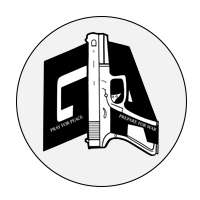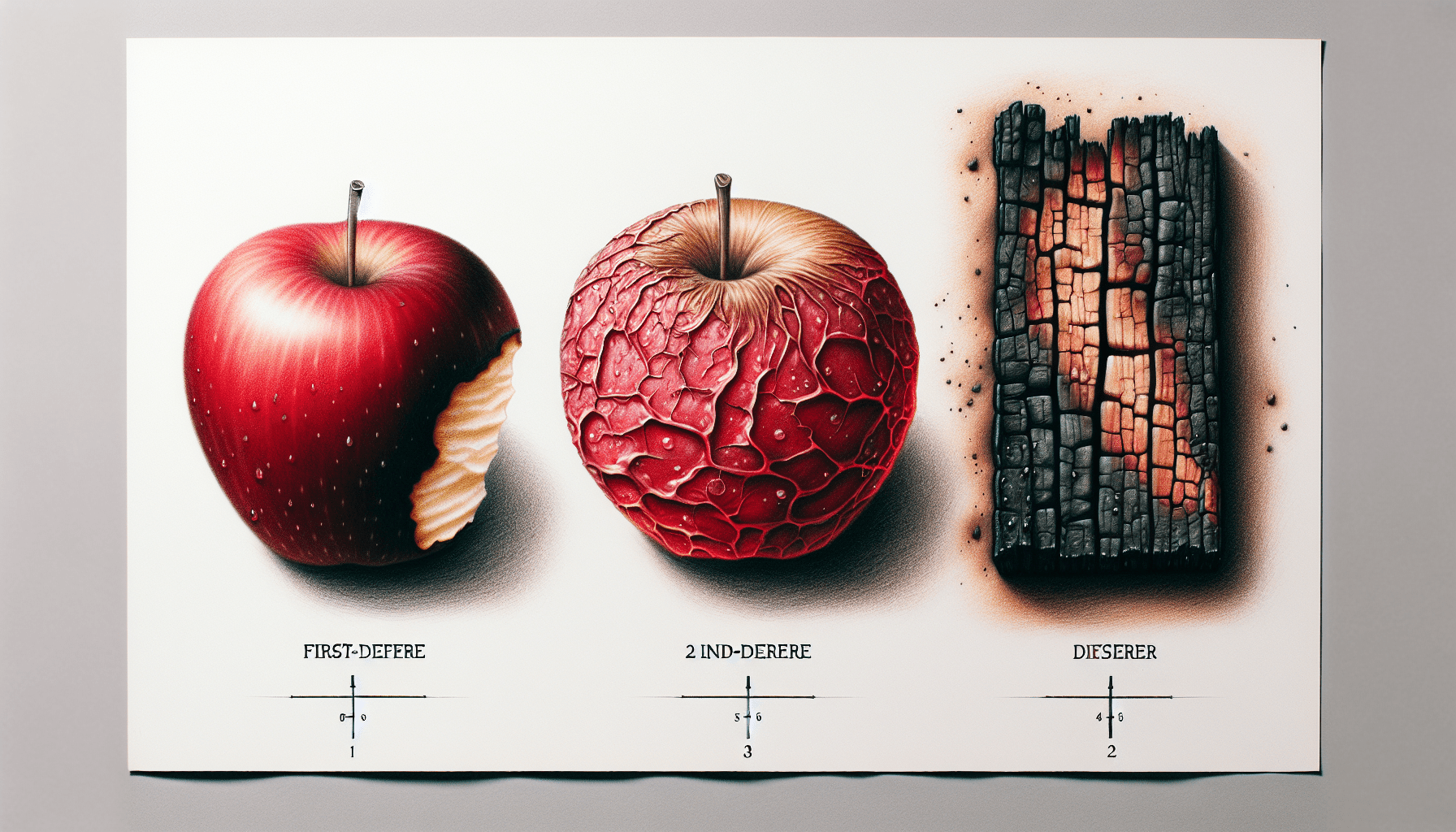Have you ever wondered what you would do if you found yourself or someone else with a burn injury? I mean, we all know burns are no joke, right? But the degrees, the treatments, the hysteria—where does one even start?

Understanding Burns: Know Your Enemy
Just like in a classic Western, not all burns are created equal. They’re categorized into three types: first, second, and third-degree burns. Knowing what kind of burn you’re dealing with can make a world of difference in how you should respond.
First-Degree Burns: The Lightweights
These are your garden-variety burns. A sunburn, perhaps? We’ve all been there—overconfident with the SPF, only to spend the next week imitating a lobster. First-degree burns only affect the outer layer of the skin. They can be painful but generally heal on their own within a week or so.
Characteristics of First-Degree Burns:
- Redness
- Mild pain
- Dry skin without blisters
How to Treat First-Degree Burns:
- Cool It Down: Run cool water over the burn for 10-15 minutes.
- Moisturize: Apply aloe vera or a moisturizing cream.
- Pain Relief: Over-the-counter pain relievers like ibuprofen can help.
- Stay Hydrated: Your skin repairs faster when you’re well-hydrated.
Well, those are pretty manageable, wouldn’t you say? Just basic first aid with a touch of TLC.
Second-Degree Burns: Stepping Up the Game
So, what’s the next level? Ah, the second-degree burns—these burns affect both the outer and underlying layers of skin and are generally more severe. They take a longer time to heal and, let’s face it, are significantly more painful.
Characteristics of Second-Degree Burns:
- Blisters
- Deep redness
- Wet and shiny appearance
- Severe pain
How to Treat Second-Degree Burns:
- Cool the Area: Rinse with cool—not cold—water for 15-30 minutes.
- Don’t Pop the Blisters: Those blisters are your body’s natural bandages.
- Apply an Antibiotic Ointment: Prevent infection, but if you’re unsure, consult a healthcare professional.
- Non-stick Dressing: Use a sterile and non-stick dressing to cover the burn.
- Seek Medical Attention: Especially if the burn area is large or on the face, hands, feet, or genitals.
See how there’s a step-up in drama? Second-degree burns demand a bit more respect and attention.
Third-Degree Burns: The Heavy Hitters
And now, ladies and gentlemen, we come to the heavyweight category—third-degree burns. These burns penetrate all layers of the skin and can affect tissues below. These bad boys are often painless at first—yep, you read that right—because the nerves get annihilated. But don’t let that fool you—they’re the most serious and can be life-threatening.
Characteristics of Third-Degree Burns:
- Waxy and white, leathery appearance
- Charred, blackened skin
- Pain may be absent due to nerve damage
How to Treat Third-Degree Burns:
- Call 911 Immediately: This is not the time for DIY heroics.
- Avoid Cold Water: Use a cool, moist sterile bandage if available but avoid immersing in cold water.
- Cover the Area: With a clean cloth or sterile dressing, but don’t apply any ointments or creams.
- Elevate Burned Parts: If possible, elevate the burned body parts above heart level.
These burns are the kind that make you realize why we should leave some things to medical professionals.
Preventing Burns: An Ounce of Prevention
You know what they say—prevention is better than cure. It’s much easier to avoid getting burned in the first place. Here are some practical tips to keep in mind:
At Home:
- Kitchen Safety: Keep pot handles turned inward, and never leave cooking unattended.
- Electrical Hazards: Regularly check for frayed wires and don’t overload outlets.
- Water Heaters: Keep them set below 120°F to prevent scalding.
At Work:
- Protective Gear: Use appropriate protective gear when dealing with heat sources or chemicals.
- Training: Ensure proper training on handling hazardous materials.
Outdoors:
- Fire Safety: When camping, make sure fires are completely extinguished before leaving.
- Sun Protection: Use SPF, wear hats, and seek shade whenever possible.
When to Seek Professional Help
I know it’s tempting to just shrug it off and say, “I’ve got this,” but sometimes professional medical help is non-negotiable.
- Large burns: If burns cover a large area, seek immediate medical attention.
- Sensitive areas: Burns on the face, hands, feet, and genitals need professional care.
- Infection signs: Redness spreading, increased pain, fever = get to a doctor.
- Third-degree burns: As mentioned, these require urgent care.
The Role of First Responders: Training and Equipment
Having the know-how and the right equipment can make all the difference. Here’s where entities like Green Line Arms can truly step up to the plate. They offer more than just firearms—they provide essential first responder medical training that can be invaluable during emergency situations.
Green Line Arms, a gun shop and virtual shooting range located at 1350 South Blue Angel Pkwy, Pensacola, Florida, doesn’t just focus on firearms. They are committed to promoting responsible gun ownership and safety education, including first responder medical tips that can be crucial for handling emergencies like severe burns.

Quick Reference Table For Treating Burns
Here’s a quick table to help you remember the differences and treatments for each burn type.
| Burn Degree | Affected Layers | Symptoms | Treatment Steps | Seek Medical Help |
|---|---|---|---|---|
| First Degree | Outer layer of skin (epidermis) | Redness, mild pain, dry skin without blisters | Cool water, moisturize, pain relief | Rarely needed |
| Second Degree | Outer and underlying layers (dermis) | Blisters, deep redness, severe pain | Cool water, don’t pop blisters, non-stick dressing, ointment | If large or on sensitive areas |
| Third Degree | All layers of skin and underlying tissue | White, waxy, leathery skin, possible no pain | Call 911, cover with clean cloth, elevate | Always |
Mental Preparedness: Keeping Your Cool
Handling an emergency is as much mental as it is physical. Panic is your worst enemy. Here’s a bit of advice:
- Stay Calm: Take deep breaths and think clearly.
- Assess the Situation: Know what kind of burn you’re dealing with.
- Take Action: Follow the guidelines you’ve learned.
Trust me, it’s easier said than done, but keeping a cool head can make all the difference.
Wrapping It Up
So, there you have it—no need to act like a deer in headlights when faced with a burn. We’ve covered the essentials, from recognizing burn types to knowing the appropriate treatments. And don’t forget, for more in-depth training and equipment, Green Line Arms in Pensacola has got your back.
Remember: PRAY FOR PEACE – PREPARE FOR WAR. And that preparation should definitely include being ready to handle burn injuries effectively.




